Ten places to visit near Mount Fuji
Known for its beaches and mountainous terrain, and only about an hour from Tokyo, eastern Shizuoka is a popular and convenient side trip out of the city. The region includes popular sightseeing destinations like the Izu Peninsula, which is designated a UNESCO geopark, and a large portion of the Fuji-Hakone-Izu National Park is located there as well. Half of Mount Fuji sits in eastern Shizuoka, and one can enjoy views of the iconic mountain from the region. Those looking to escape the city to be surrounded by nature should definitely consider visiting the Izu Peninsula and the area around Mount Fuji in eastern Shizuoka.
Eastern Shizuoka is easily accessed by bullet train and has three stations, Atami, Mishima and Shin-Fuji stations, along the Tokaido Shinkansen. The one way journey from Tokyo to either one of the three stations takes about an hour. In this article, I will be introducing ten spots spread across ten cities and towns, some of which offer excellent views of Mount Fuji when the weather is clear. All the spots are accessible by a variety of public transport, but a rental car provides greater flexibility and convenience.
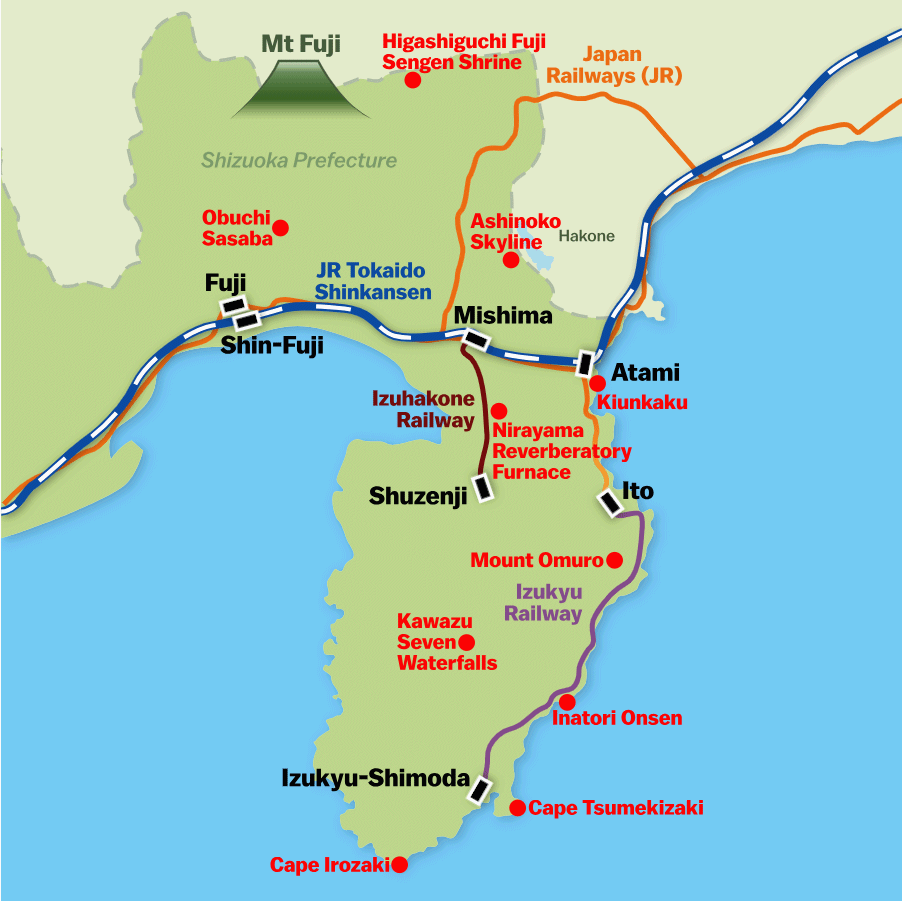
Kiunkaku
Located in Atami City, Kiunkaku was completed in 1919 as a holiday home for a businessman and then was converted into a traditional Japanese-style inn in 1947. Kiunkaku operated as an inn for about 50 years, during which time famous authors like Mishima Yukio and Dazai Osamu stayed over.
The former ryokan is now owned by the city and preserved as a cultural property. Several buildings make up the entire complex, and a tour of the interior takes one on a journey to see both Japanese and Western designs and architectural styles up close. Of interest are the vividly colored walls in the traditional Japanese-style rooms as well as the tiled Roman baths. A stroll through the garden allows visitors to appreciate seasonal flowers and the exterior of the buildings.
Access: 20 minutes on foot from Atami Station on the Tokaido Shinkansen.
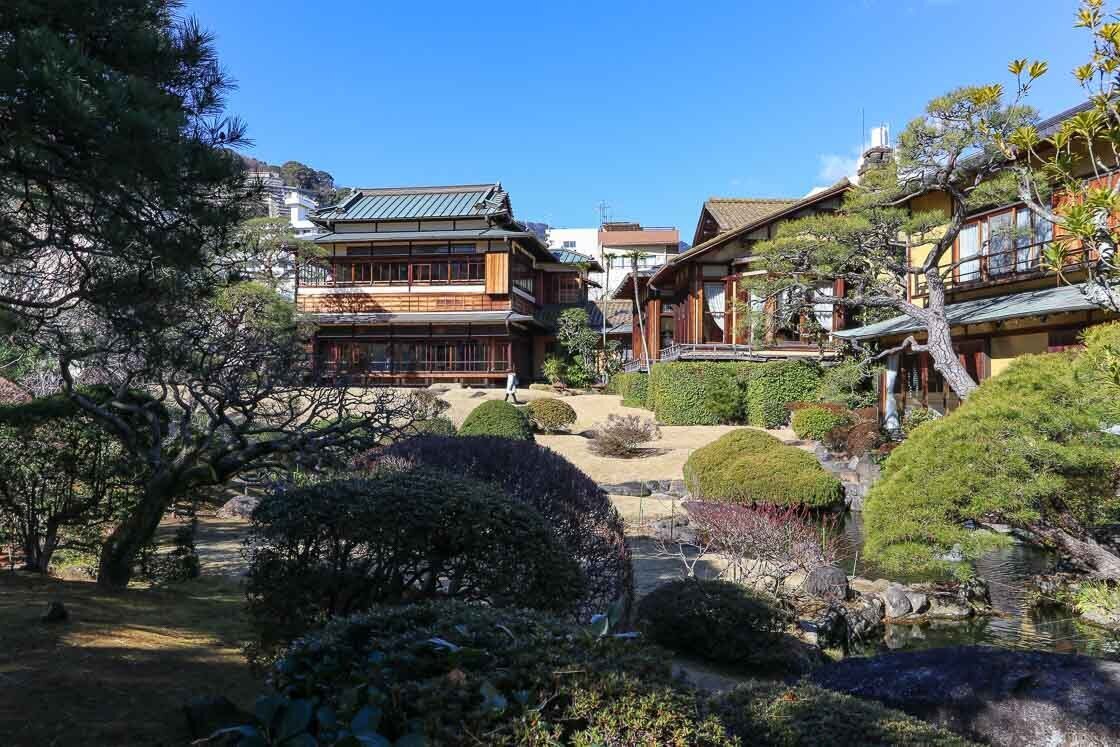
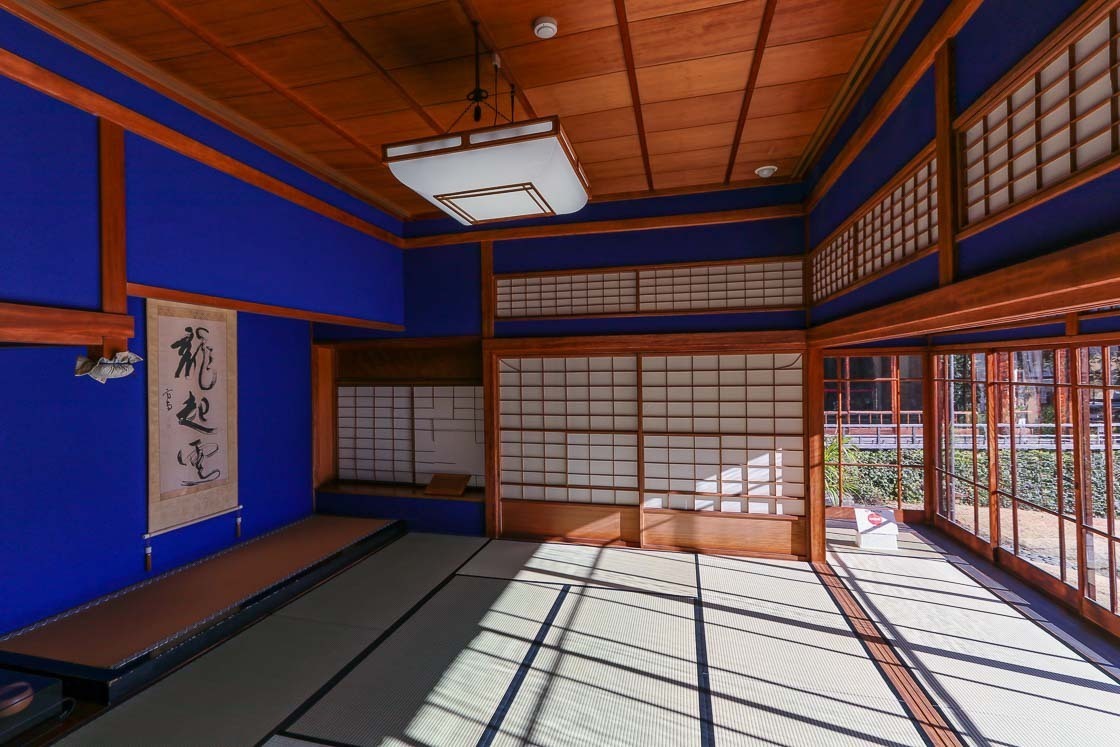
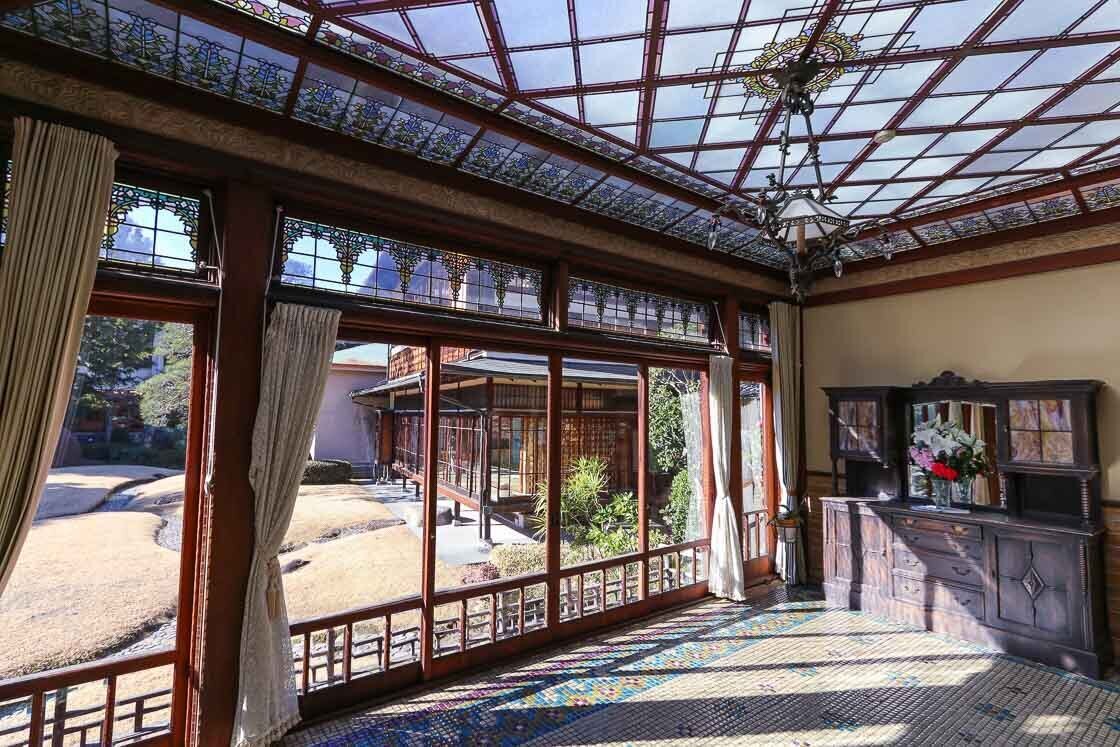
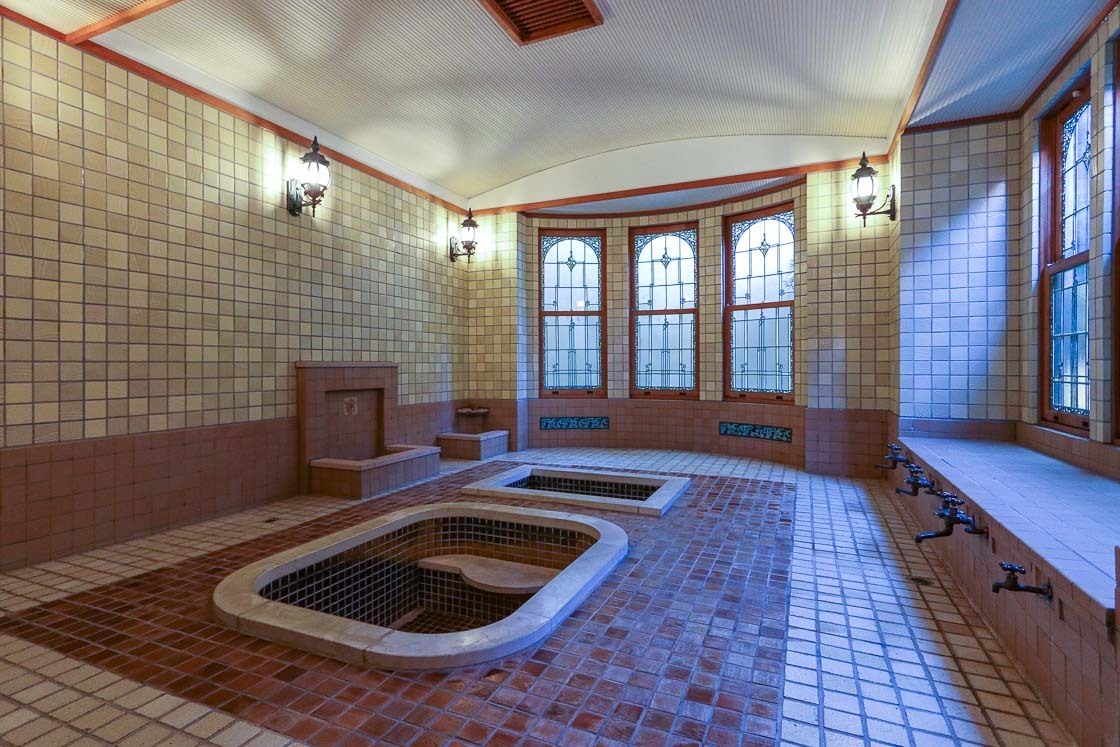
Mount Omuro
Mount Omuro is one of the symbols of Ito City. Its last eruption 4000 years ago changed the surrounding landscape and created the unique geological structures found along the area's coastline. Today, the 580 meter tall mountain is a popular sightseeing attraction, and a chairlift takes one up to the peak. At the top, visitors typically go for a scenic walk around its rim, which takes a leisurely 30 minutes, and enjoy panoramic views of Mount Fuji, the Pacific Ocean and the Izu Islands when the weather is clear.
Access: 20 minutes by bus from Izu-Kogen Station on the Izukyu Railway.
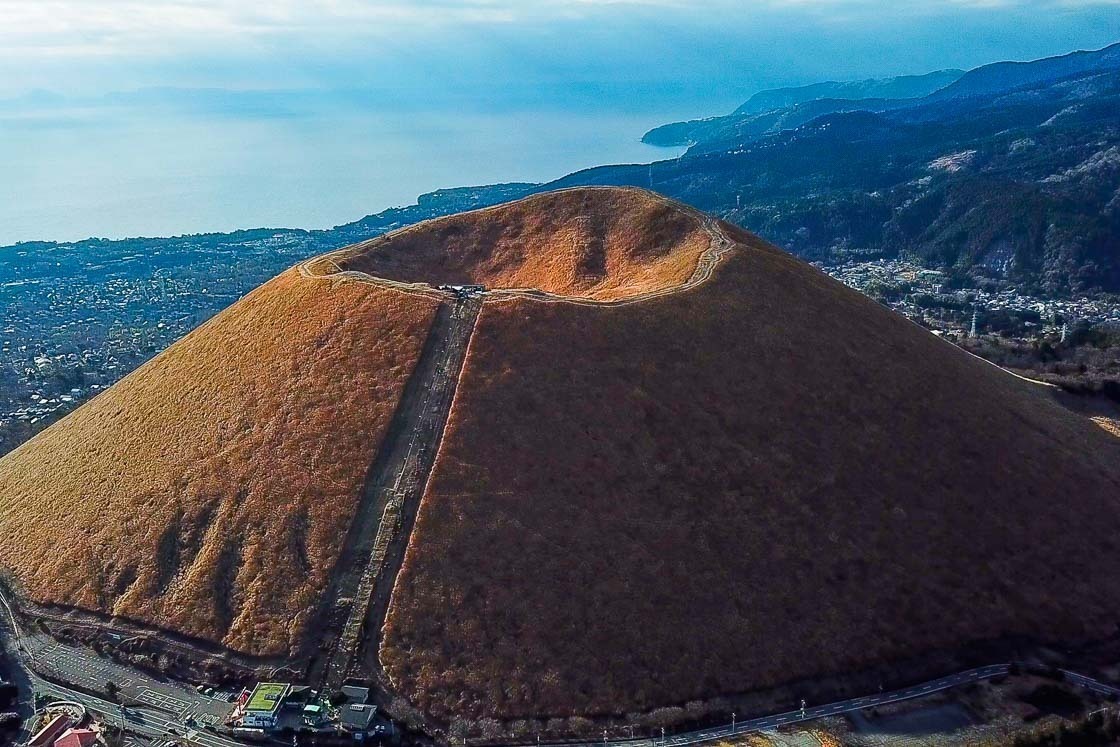
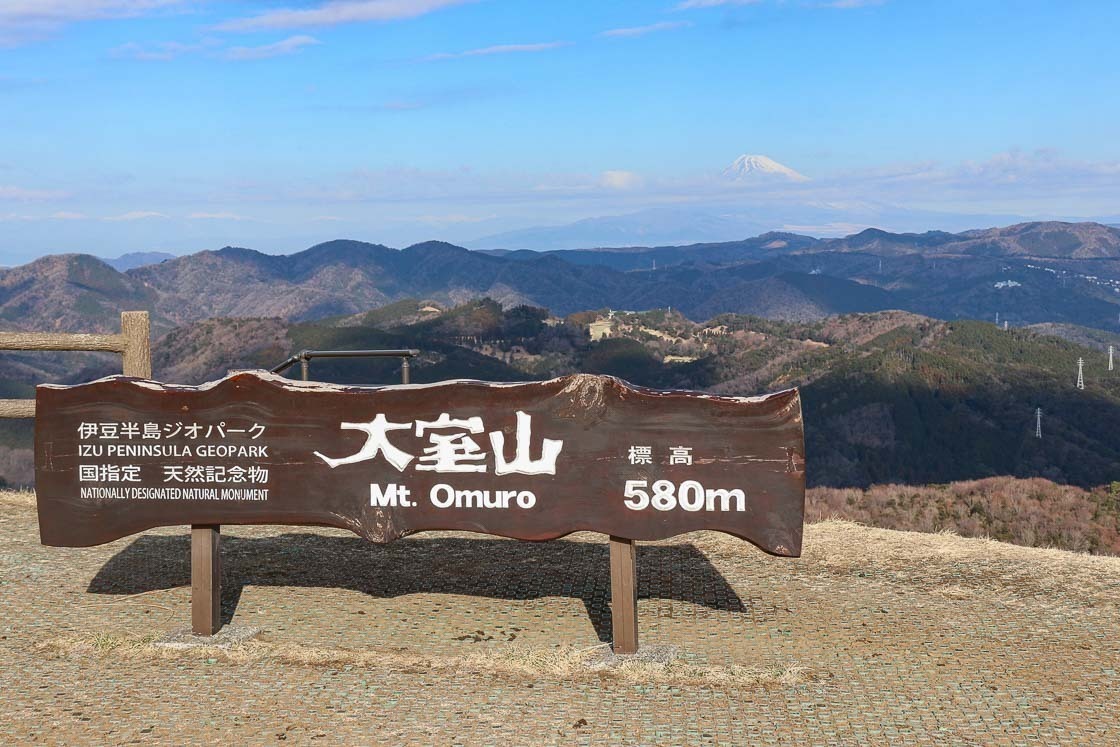
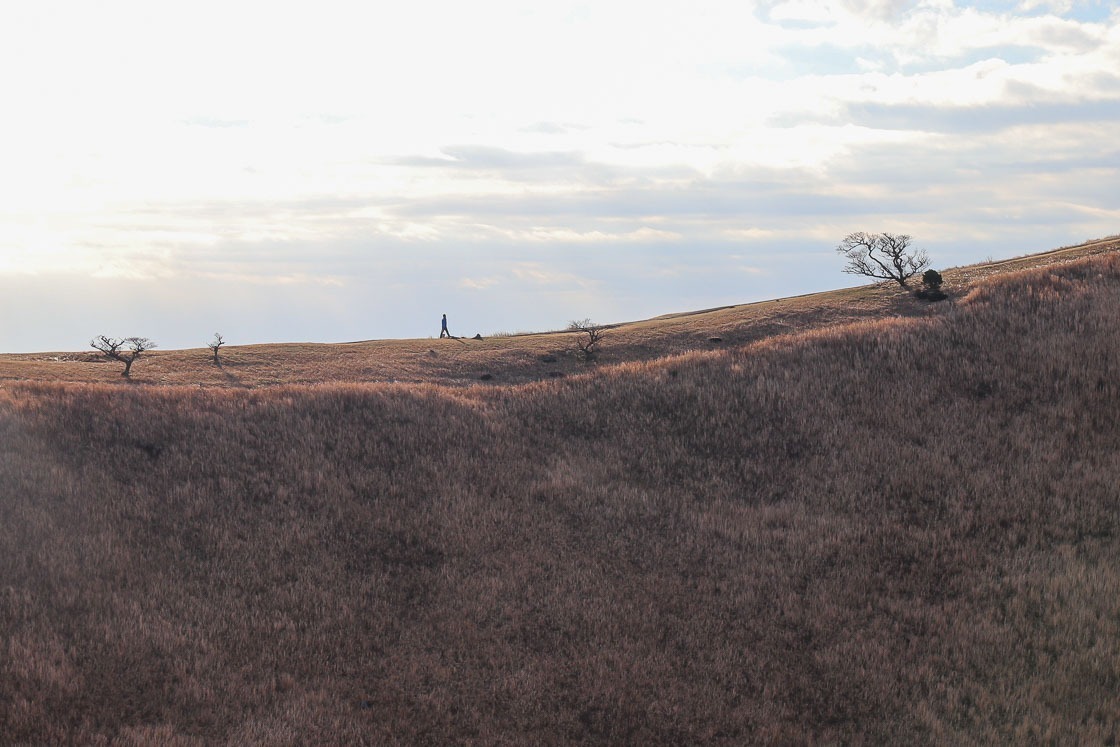
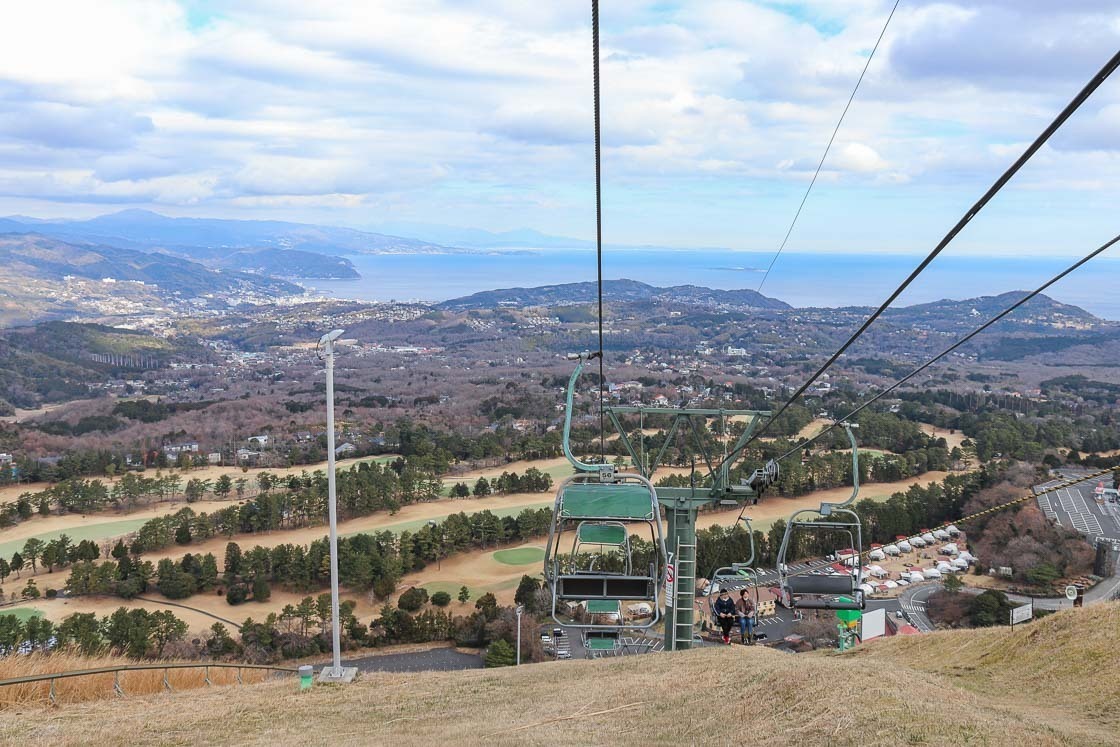
Inatori Onsen
Located in southeastern Izu Peninsula, Higashi Izu Town is known for its coastal hot spring villages, of which there are six. Staying overnight at an onsen accommodation is a nice way to relax and unwind, and soaking in a hot spring bath with ocean views is a luxury not to be missed.
Inatori Onsen is the southernmost hot spring village in Higashi Izu Town with a number of accommodations built along the coastline. A stroll along the shoreline provides views of the port of Inatori as well as of the Izu Islands when the weather is clear.
Access: 15-20 minutes on foot from Izu-Inatori Station on the Izukyu Railway.
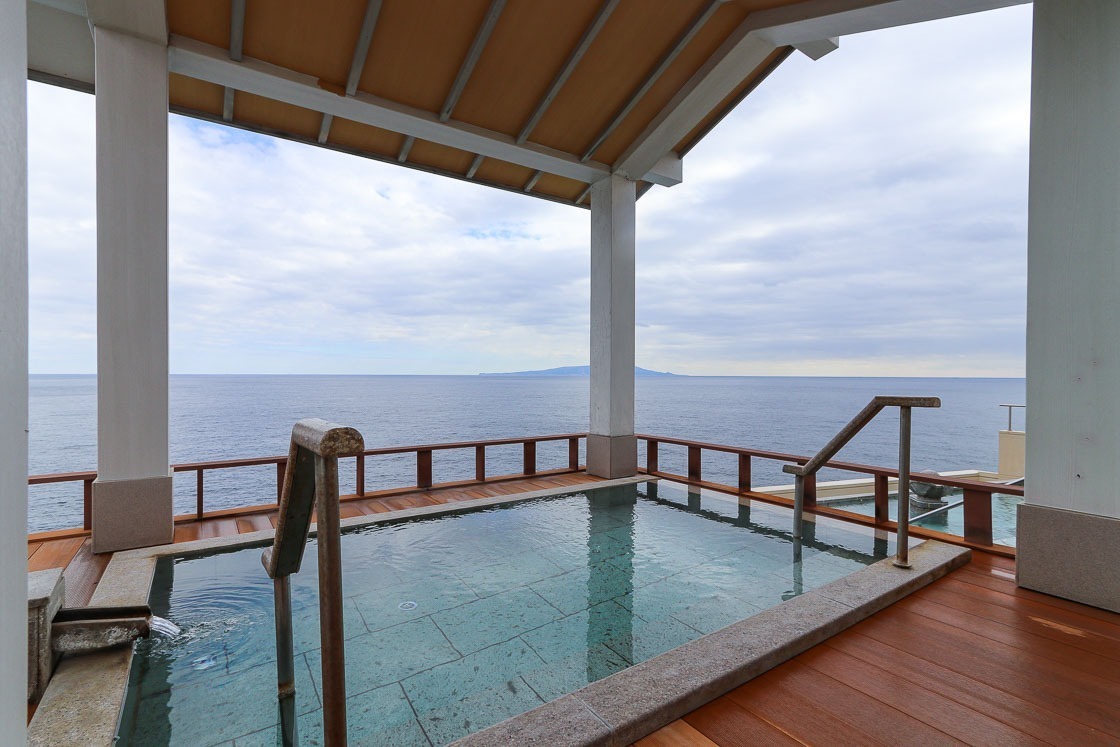
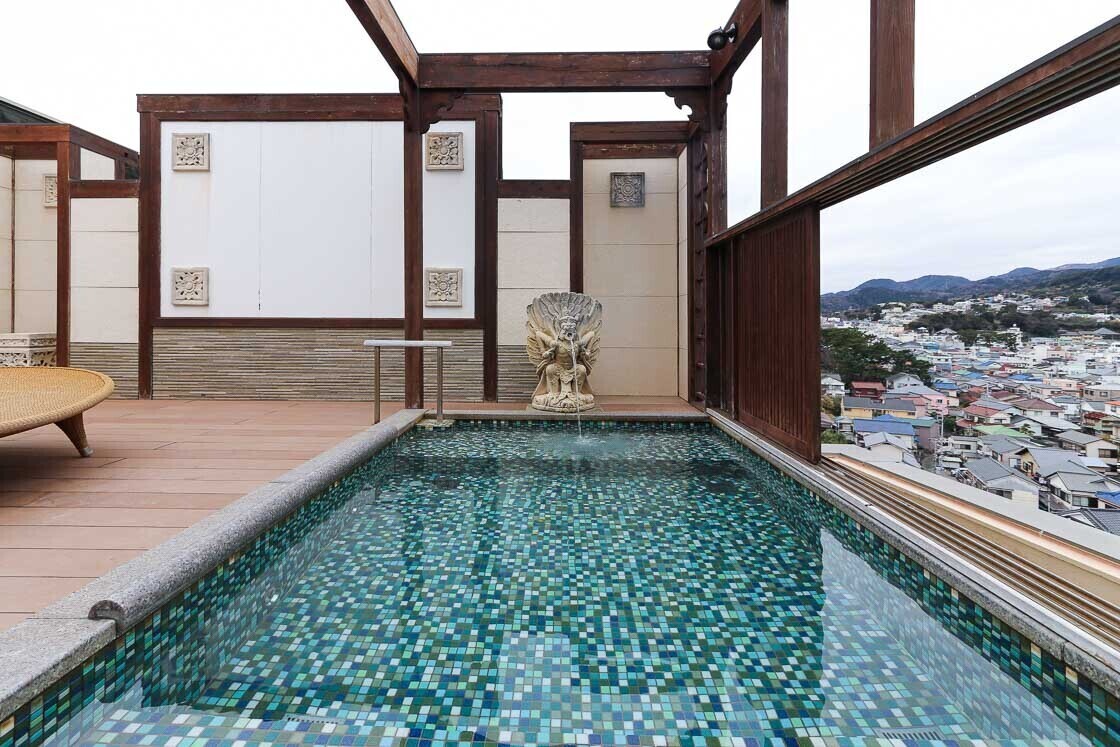

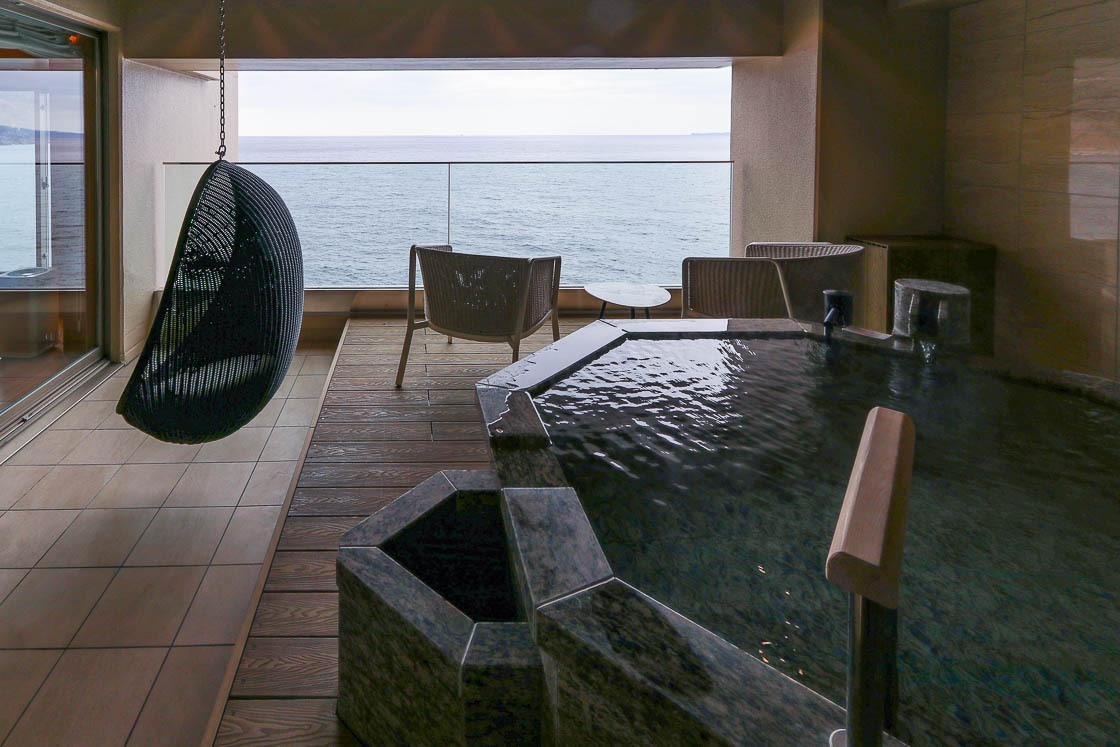
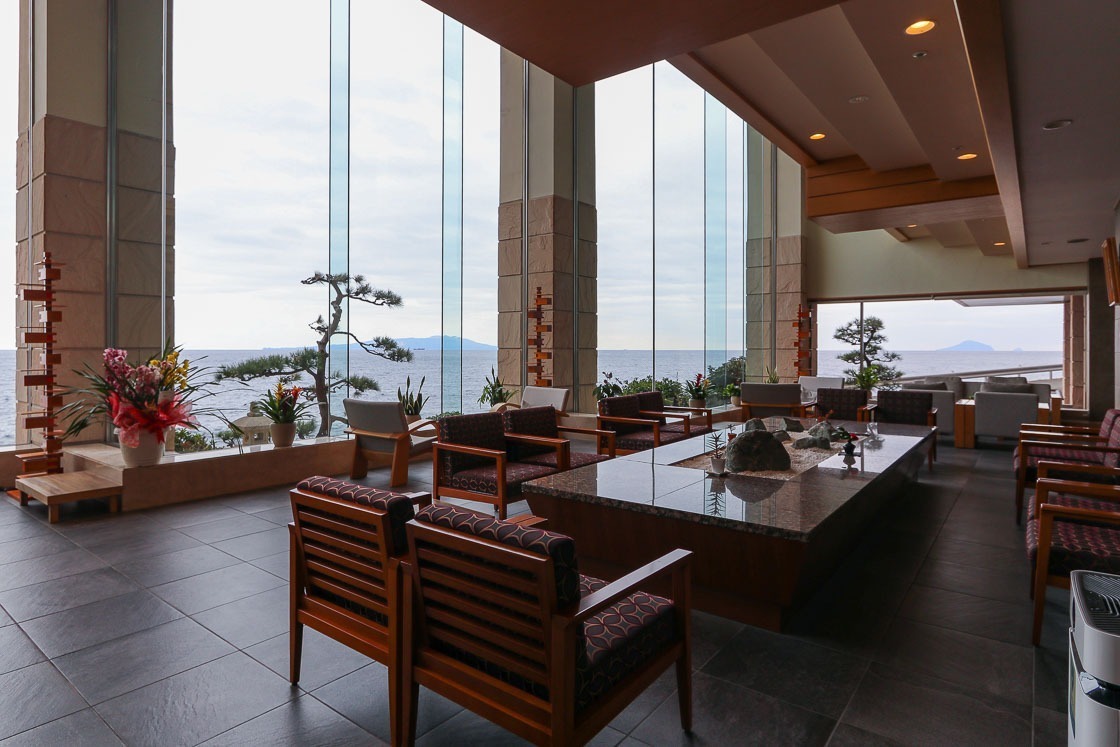
Cape Tsumekizaki
Near the southern end of the Izu Peninsula is Cape Tsumekizaki, where visitors are treated to views of a rugged coastline, seasonal flowers and secluded beaches. The beaches near the cape, like Kujuppama Beach, do not get as crowded as the ones in Atami, and the clear waters provide nice snorkeling and swimming experiences. Walking trails connect the beaches with the cape, where a lighthouse stands at the waters' edge, warning passing ships of the rocky coast. Additionally, the coastline consists mostly of columnar joints, which can be seen along the walking trails and along the shoreline.
Access: 20 minutes by bus from Izukyu-Shimoda Station on the Izukyu Railway.

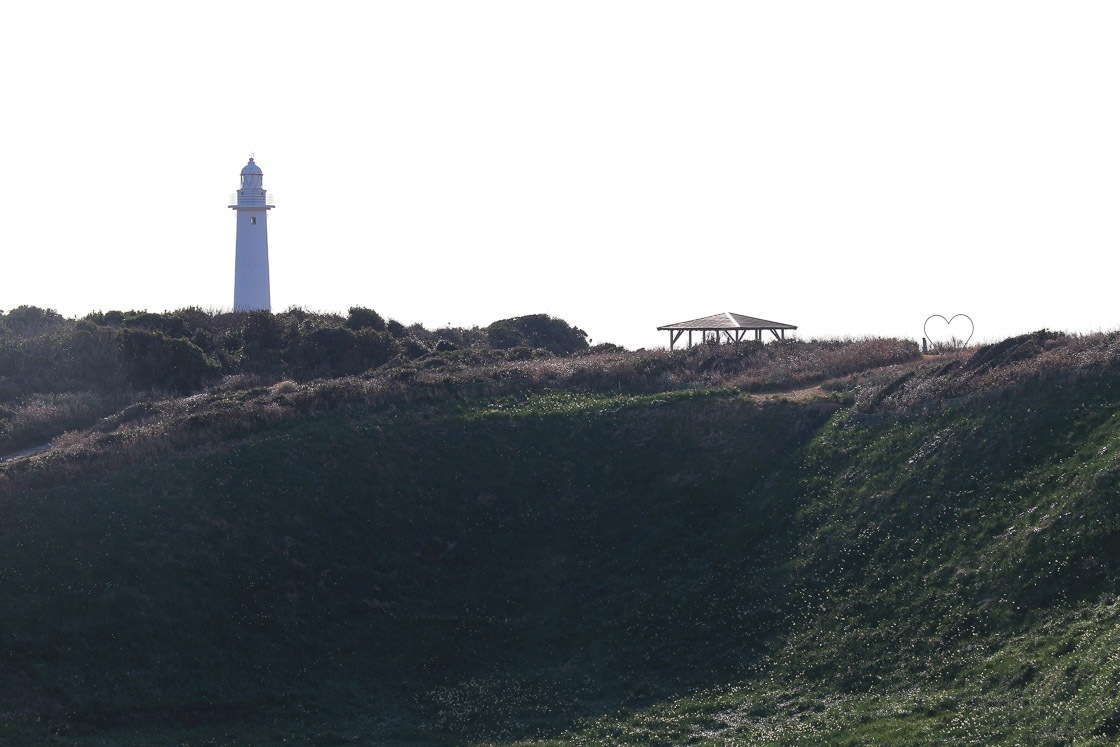
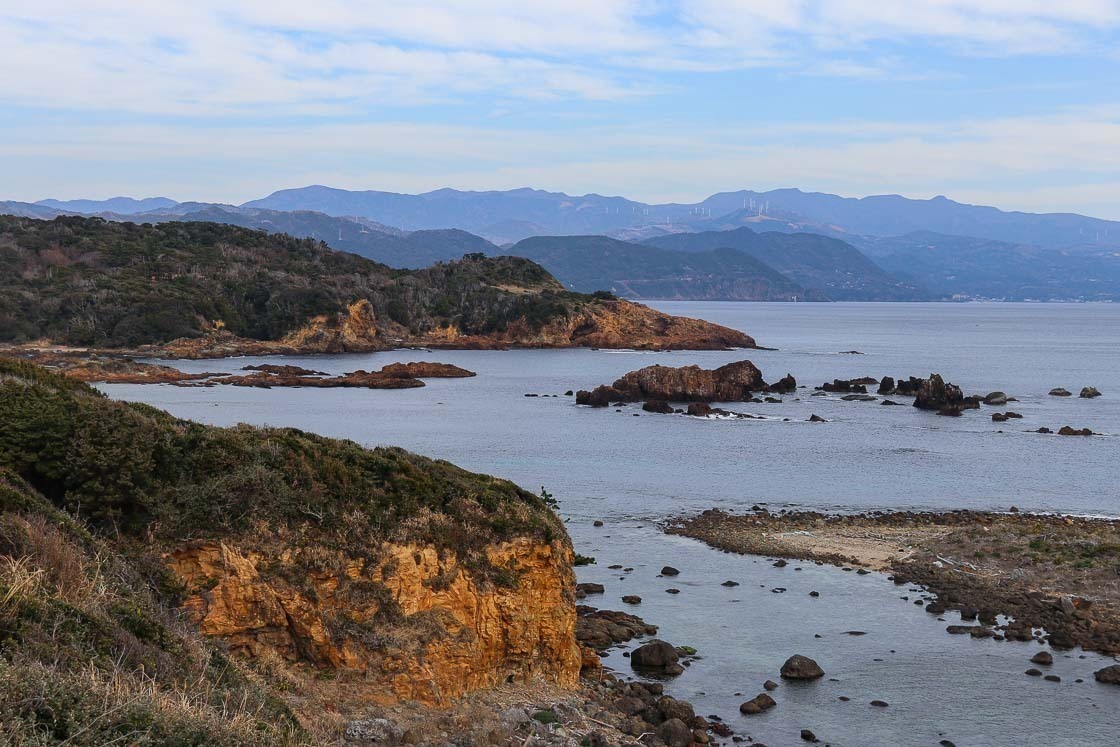

Cape Irozaki
Cape Irozaki is located at the southernmost tip of the Izu Peninsula and has a jagged coastline. A paved walking trail leads to the Irozaki Lighthouse and continues to Iro Shrine, which is built into the cliff face, and Kumano Shrine, which is built at the tip of the cape. The walk from the bus stop to the tip of the cape takes about ten minutes. From the tip of Cape Irozaki, panoramic views of the Pacific Ocean and the nearby cliffs can be enjoyed, and the Izu Islands can also be seen when visibility is good.
Access: 45 minutes by bus from Izukyu-Shimoda Station on the Izukyu Railway.
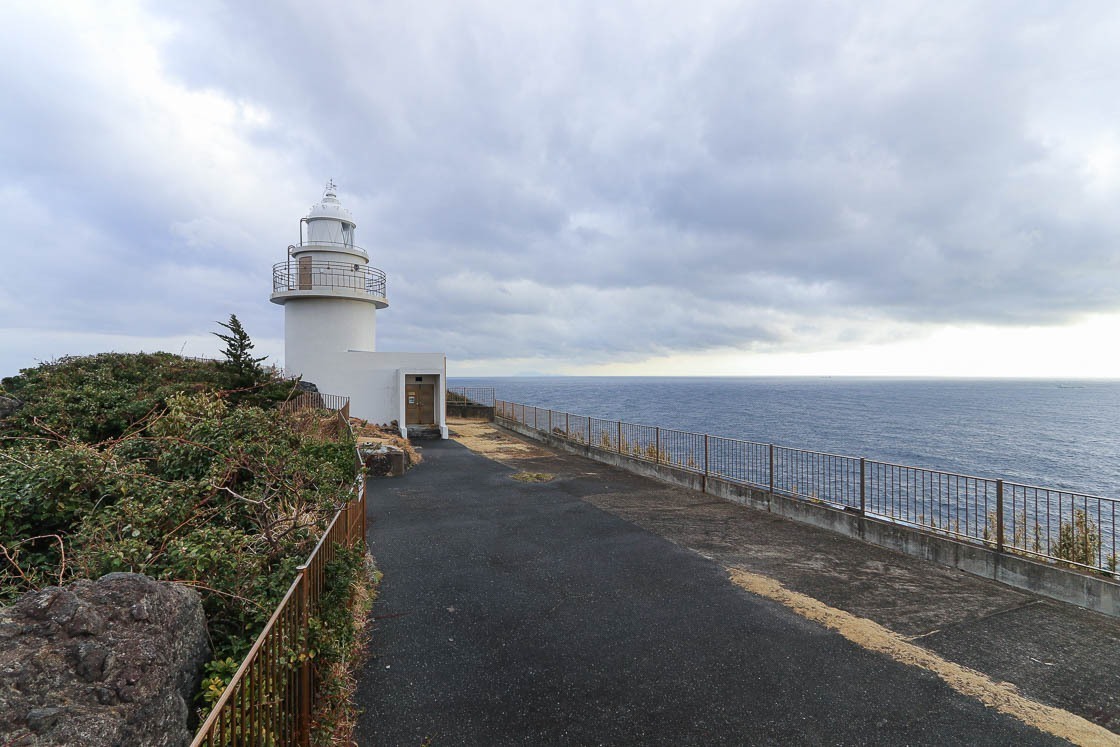
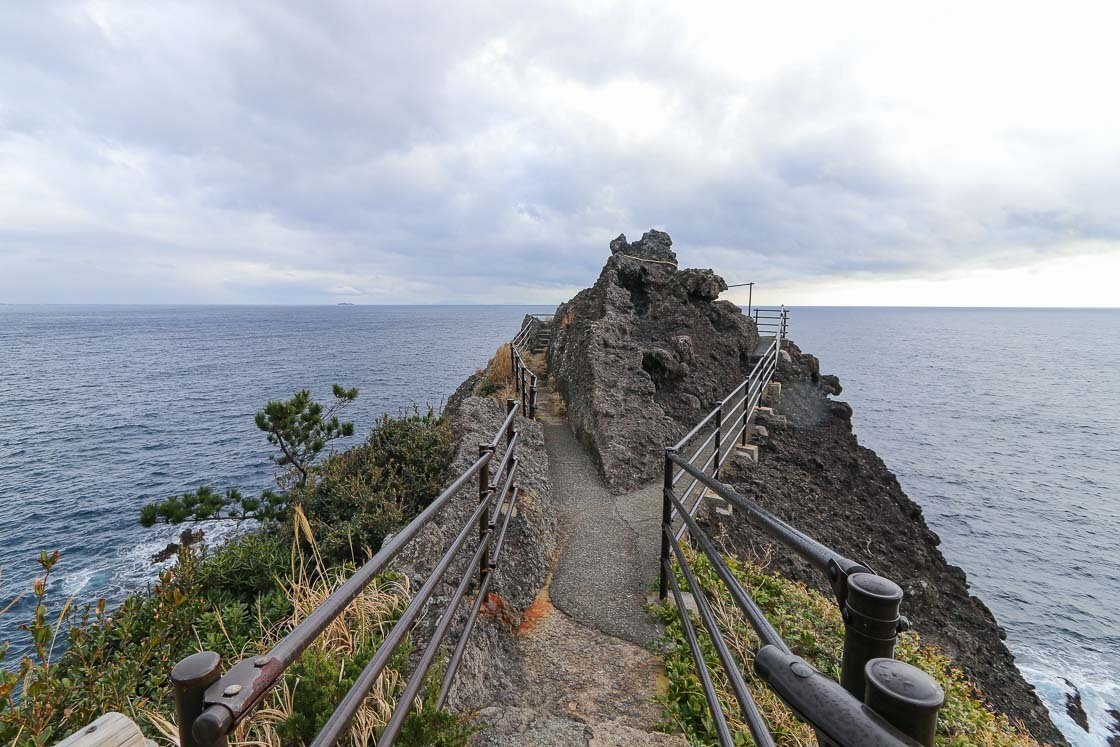
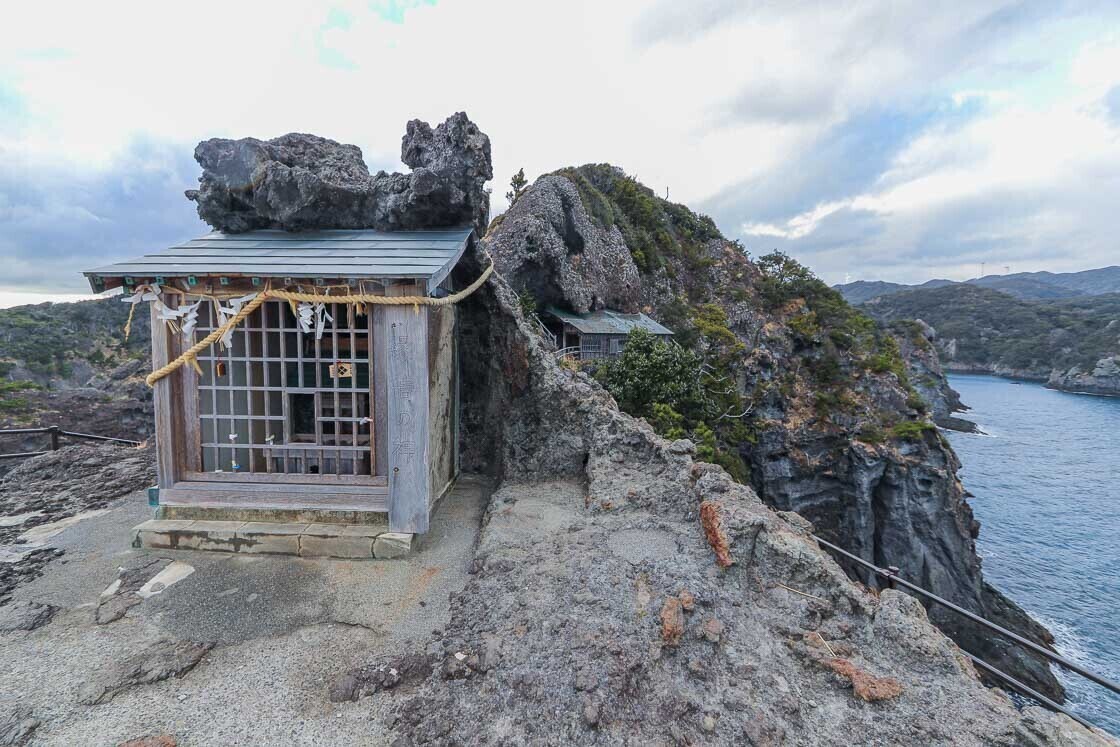
Kawazu Seven Waterfalls
Kawazu is famous for its early flowering Kawazu cherry blossoms and its seven waterfalls known as the Kawazu Nanadaru, which have varying heights. While the cherry blossoms can be seen only in February and March, the Kawazu Nanadaru can be visited all year round.
Cycling to the waterfalls is a nice outdoor activity for the adventurous, and electric powered bicycles are available at the Kawazu Tourism Exchange Center not far from Kawazu Station. It takes about 45-60 minutes to cycle to the waterfall parking area, and a well-maintained walking trail connects the waterfalls, which can be comfortably explored in about 1-2 hours at a leisurely pace. Bicycle availability is on a first-come first-served basis, and reservations are recommended if you do not want to miss out.
Access: Bicycle rentals are available from the Kawazu Tourism Exchange Center, which is approximately ten minutes on foot from Kawazu Station on the Izukyu Railway. A 4-hour electric bicycle rental costs 3000 yen, which also includes a helmet and gloves. The waterfalls can also be reached by hourly buses from Kawazu Station. The one way journey takes about 30 minutes.
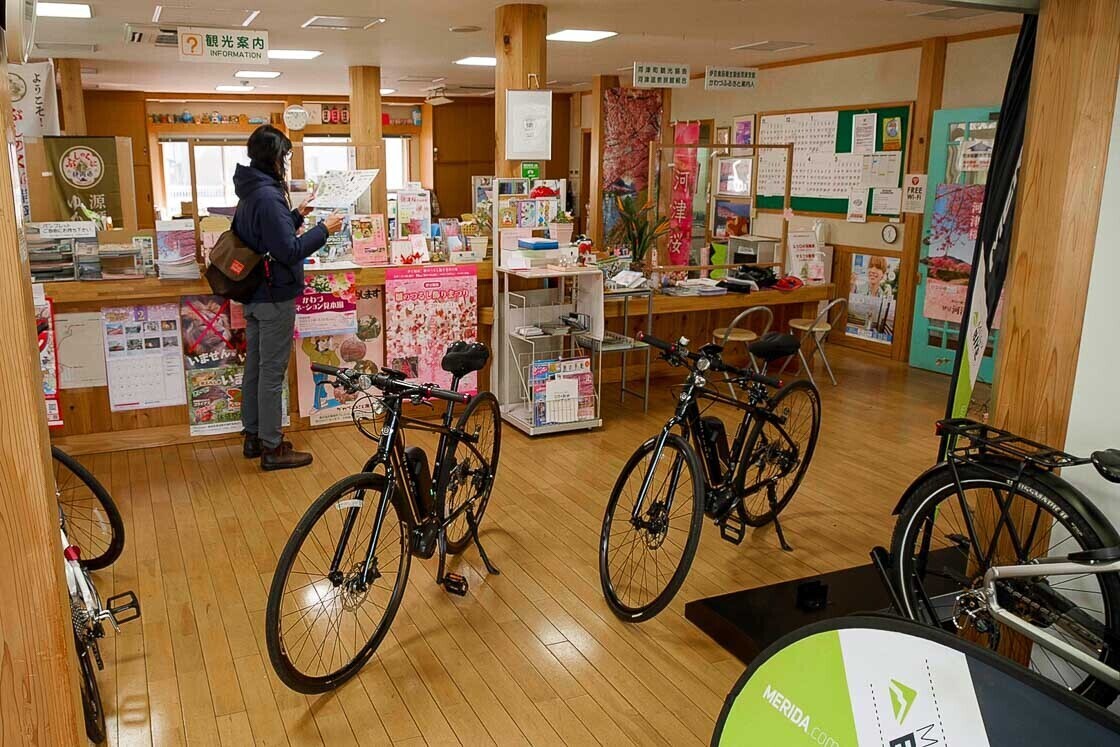
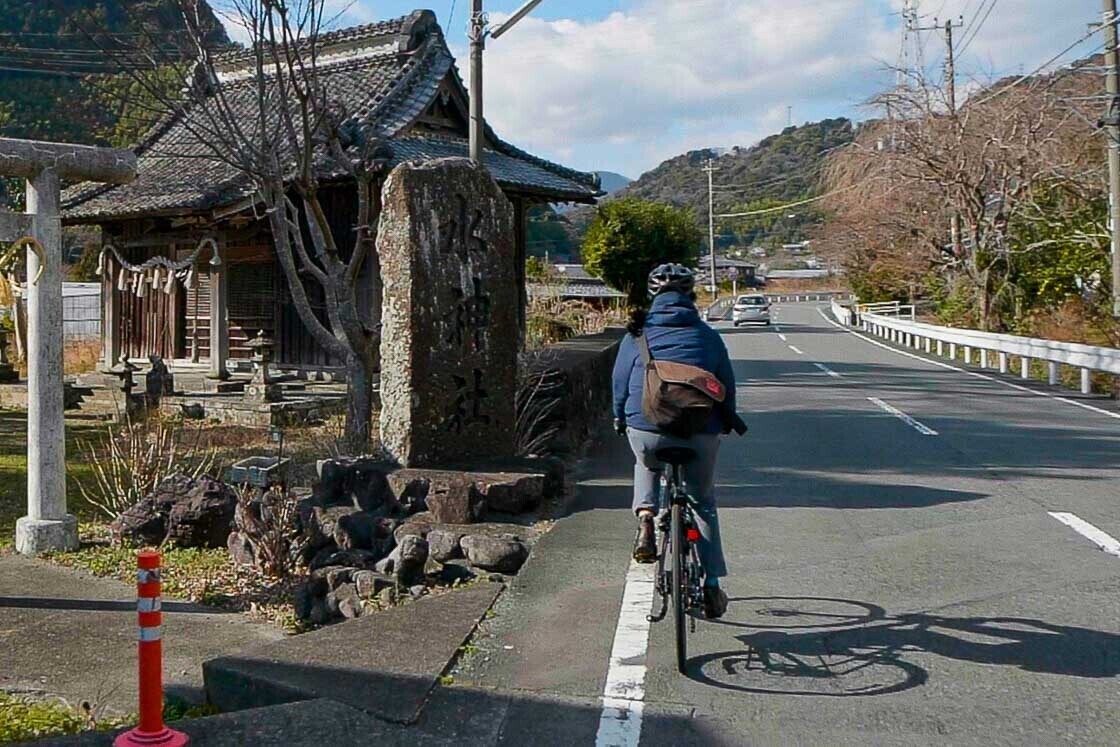
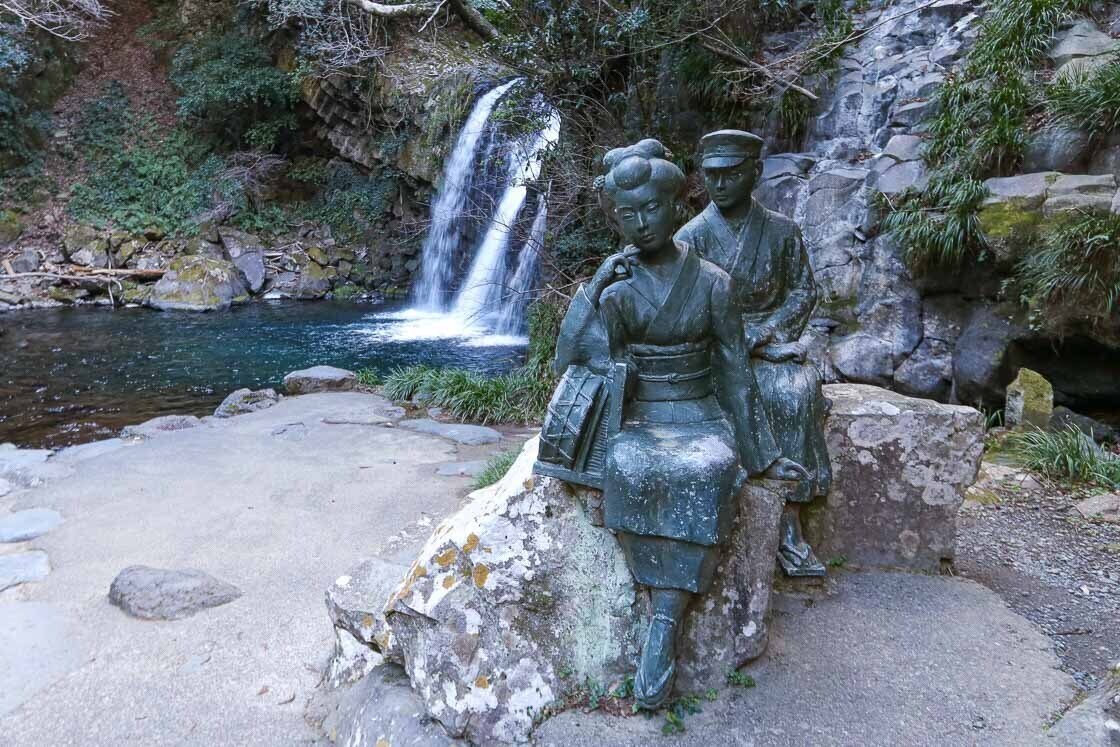
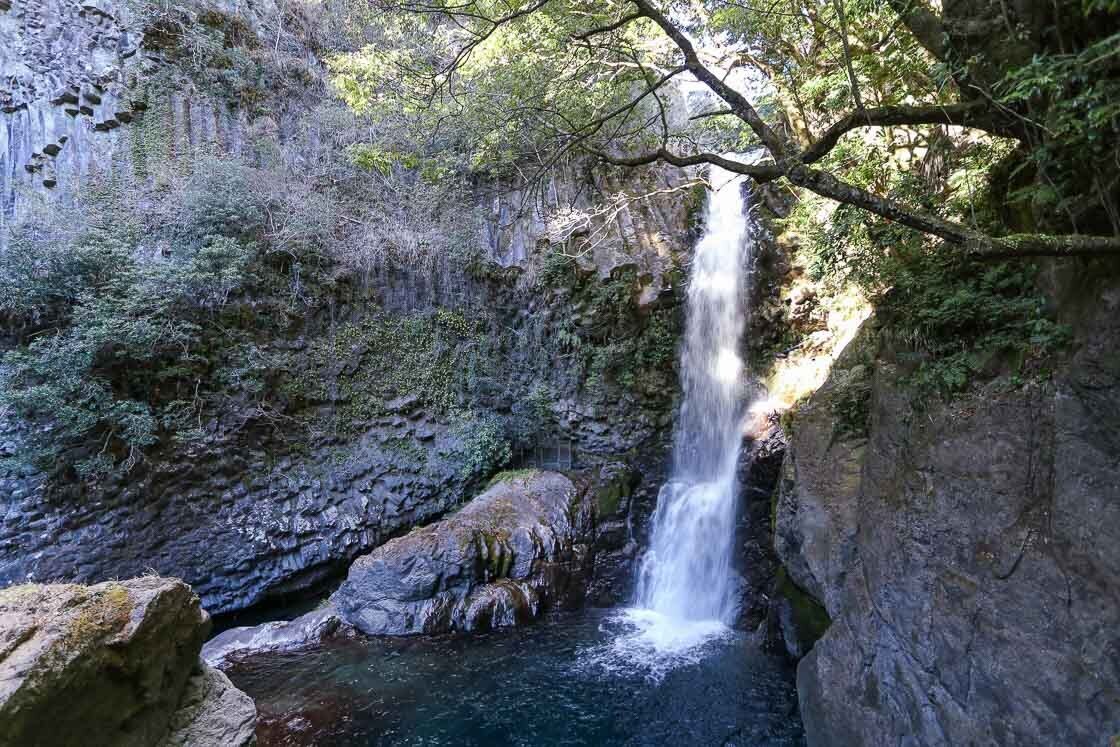
Nirayama Reverberatory Furnaces
The Nirayama Reverberatory Furnaces are well preserved historical furnaces that played a part in the early stages of Japanfs industrial revolution. Representing the start of modern iron production in Japan, the furnaces, which produced cannons to protect Japan against foreign warships, received world heritage status in 2015 as one of the Sites of Japanfs Meiji Industrial Revolution.
The recommended visiting route starts at the visitor center to learn more about the furnacefs history and functions, before continuing to the actual site where visitors can take a closer look at what remains of it. A stroll through the garden rounds up the visit, but visitors should not miss going to the observation deck in the tea fields on a small hill about three minutes away on foot, which offer views of Mount Fuji and the furnaces together.
Access: 30 minutes on foot or 10 minutes by taxi from Izu-Nagaoka Station on the Izuhakone Railway.


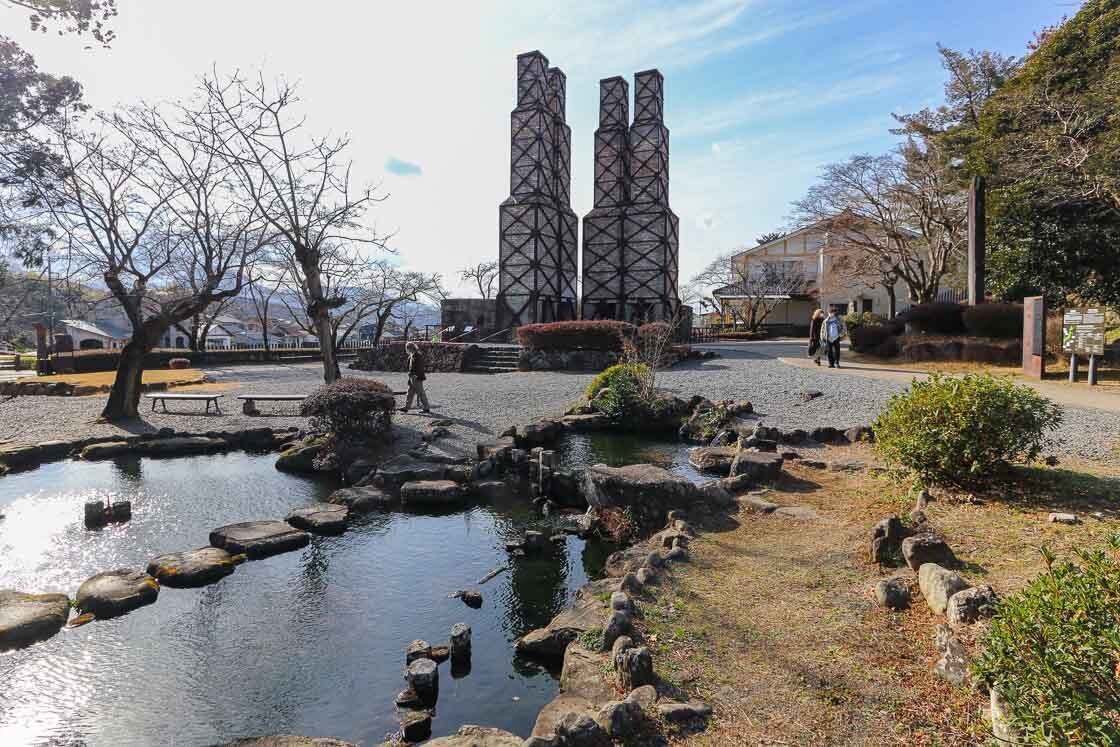
Obuchi Sasaba
Some of Japanfs best known symbols are Mount Fuji and green tea, and the two together make a timeless image that many photographers pursue. Shizuoka Prefecture has the most number of tea plantations in Japan, and over at the scenic Obuchi Sasaba, one can have a view of the tea fields with Mount Fuji in the background. The tea fields at Obuchi Sasaba were painstakingly maintained so as to prevent the view from being spoiled by obstructions like power lines, and the classic view we can enjoy today is the result of the tea farmers' hard work and conservation efforts. A visit to Obuchi Sasaba is definitely worth the trek when the weather is clear.
Access: About 25 minutes by taxi from Fuji Station on the JR Tokaido Line or Shin-Fuji Station on the Tokaido Shinkansen.
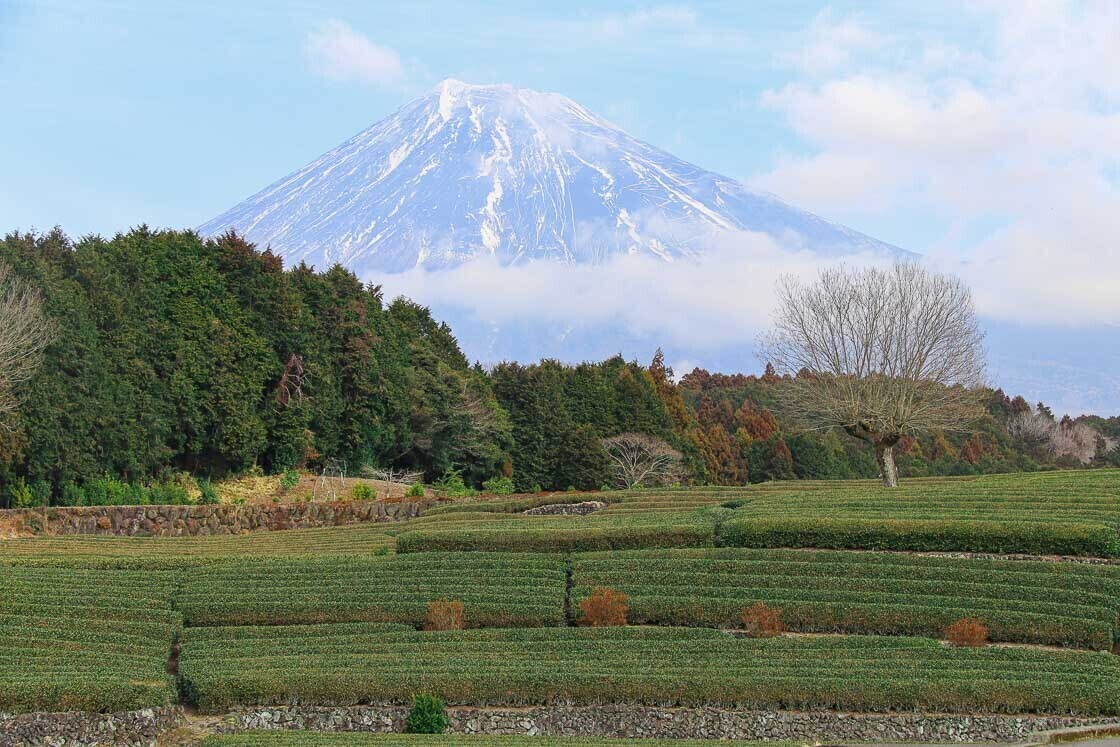
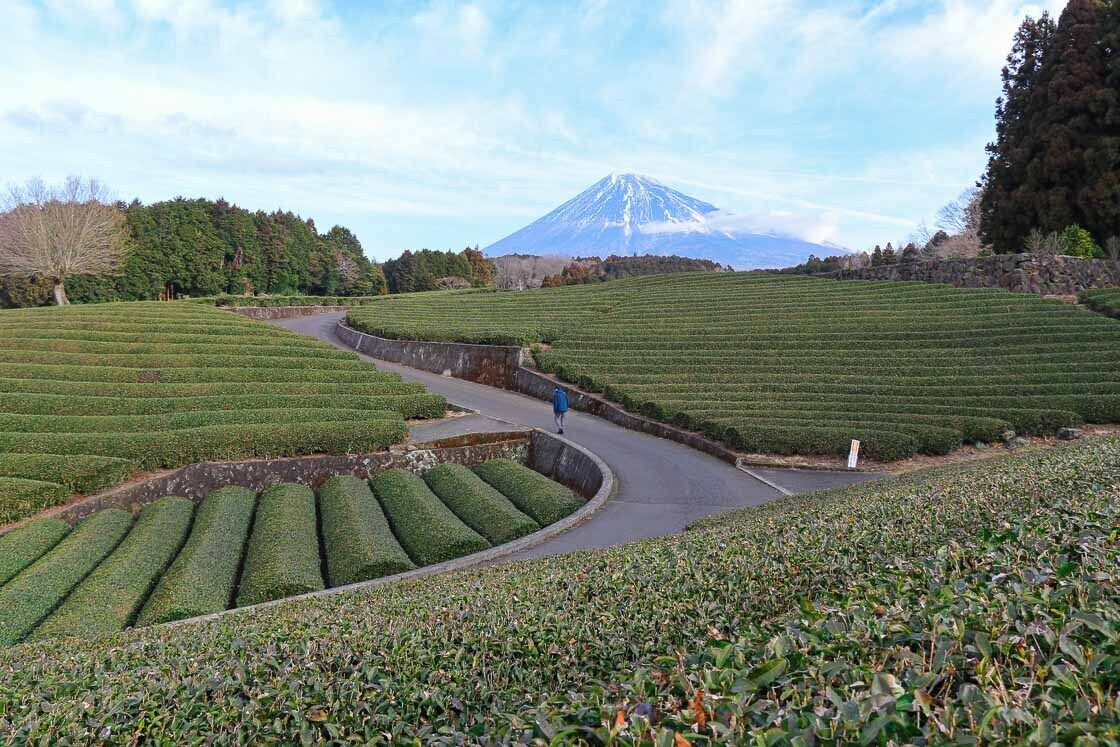

Higashiguchi Fuji Sengen Shrine
The Higashiguchi Fuji Sengen Shrine is a historic shrine at the eastern base of Mount Fuji. It is also the gateway to the Subashiri trail, one of the four major trails leading up to Mount Fuji. Since the feudal period, pilgrims and hikers would pray for a safe climb at the shrine before commencing their journey to the peak. Mount Fujifs last eruption in 1707 covered the shrine and the surrounding town in about 3-4 meters of ash, and a few large rocks remain as reminders of that eruption after the shrine was rebuilt.
Access: 25 minutes by bus from Gotemba Station on the JR Gotemba Line.
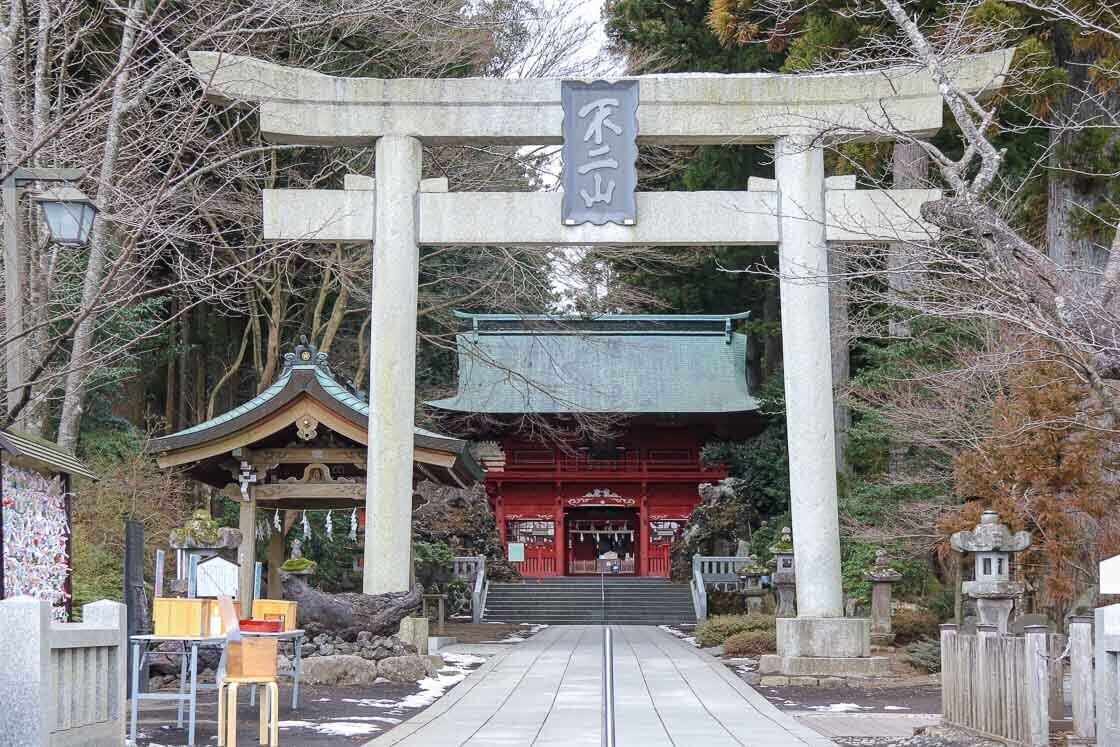
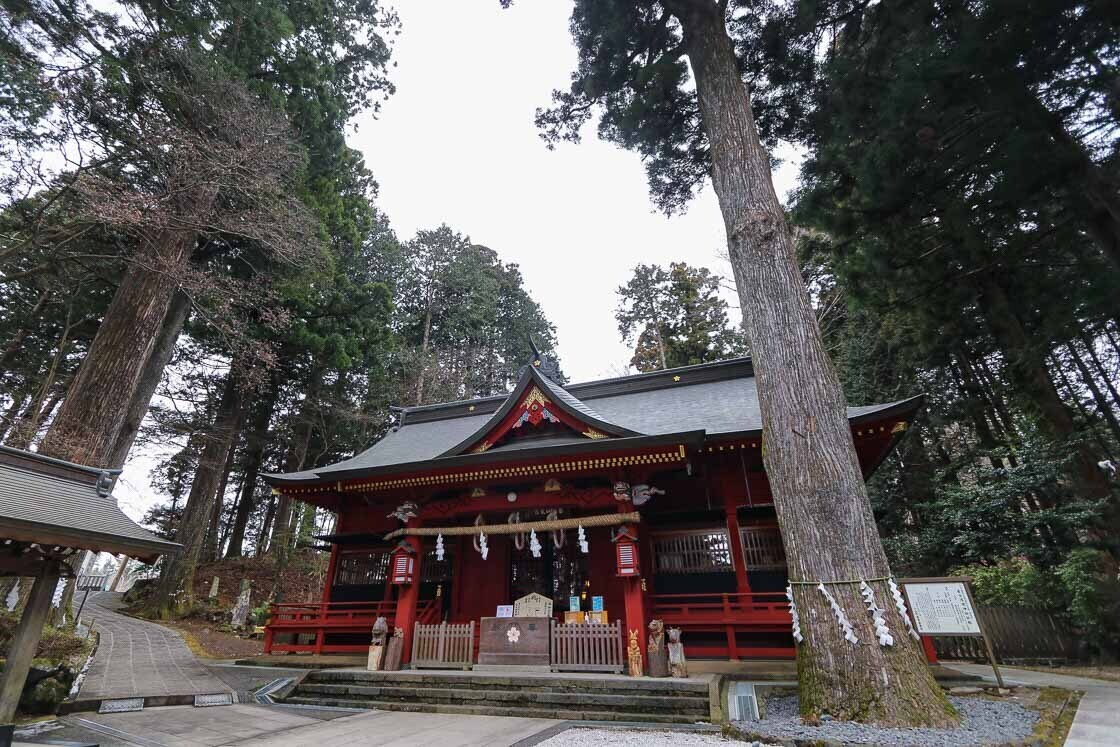
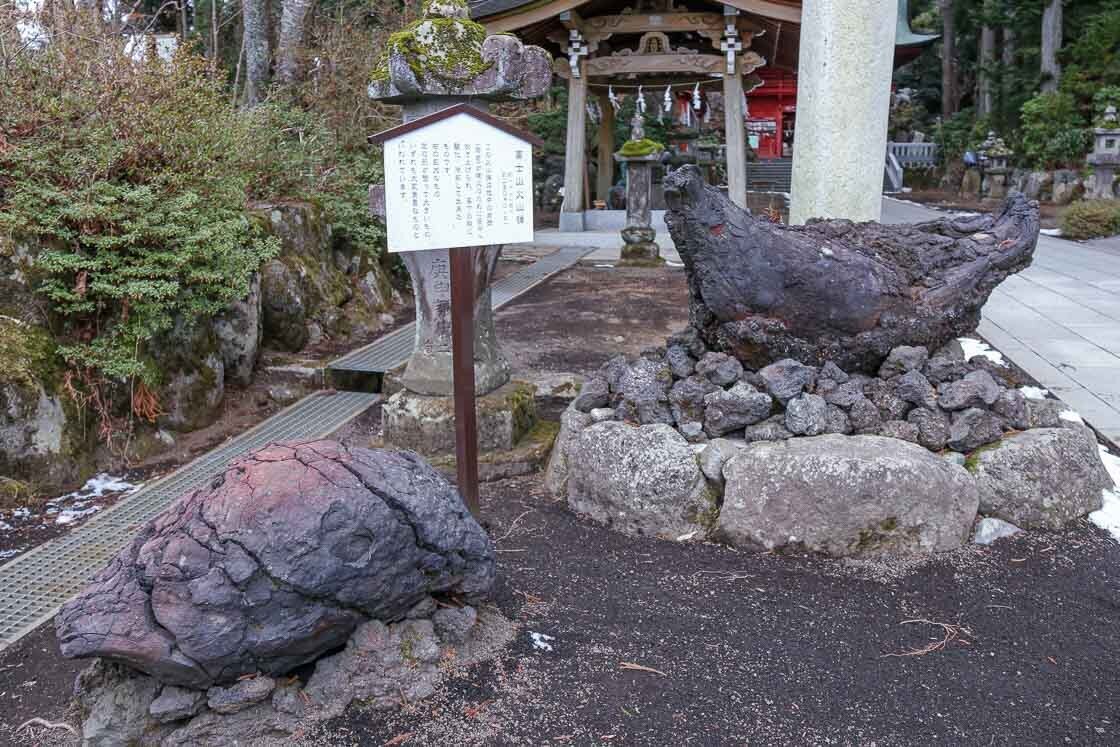
Ashinoko Skyline
The Ashinoko Skyline is a scenic driving road on the western side of Lake Ashinoko. The winding road is known for its views of Mount Fuji, which provides a scenic backdrop at each turn and corner. Lookout points can be found along the way, and Mikuni-toge or Mikuni mountain pass is the highest one at 1070 meters. One can go for a short walk at the various viewpoints and admire the lake and the hot spring town of Hakone as well as Mount Fuji when the weather allows for it. Driving along the Ashinoko Skyline may be atmospheric, but it is worth remembering that Mount Fuji can be pretty shy and there is no guarantee of seeing her.
Access: 30 minute drive from either Atami or Mishima stations on the Tokaido Shinkansen. Rental car outlets can be found at either station.
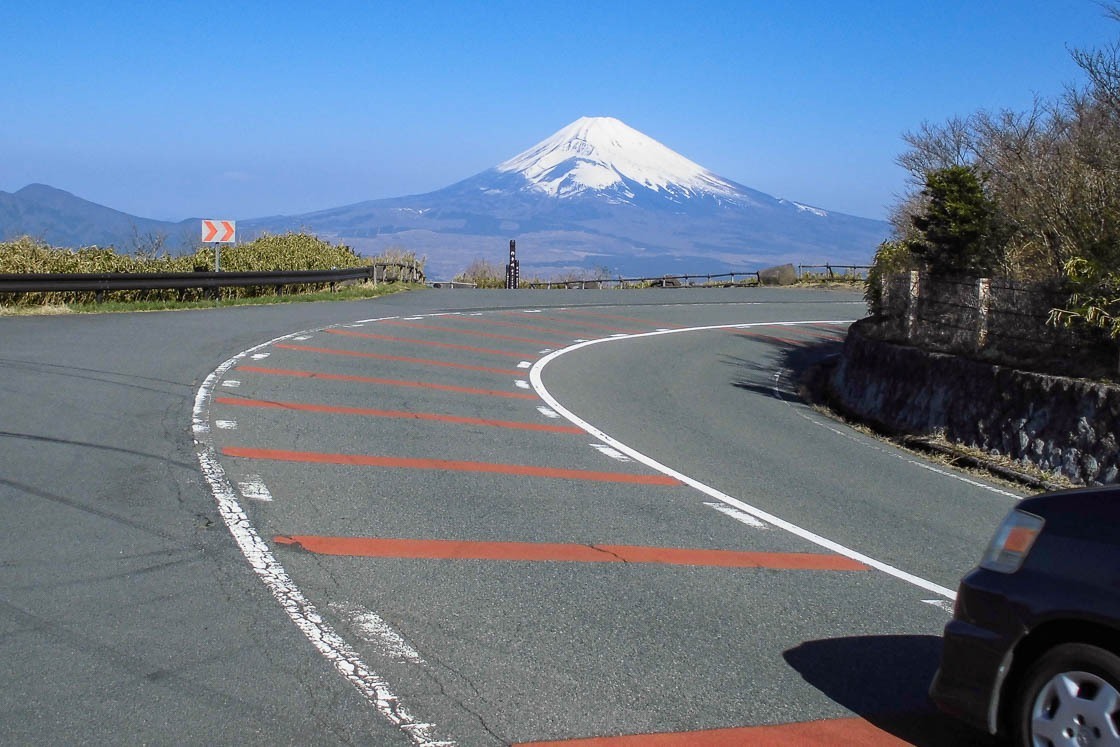

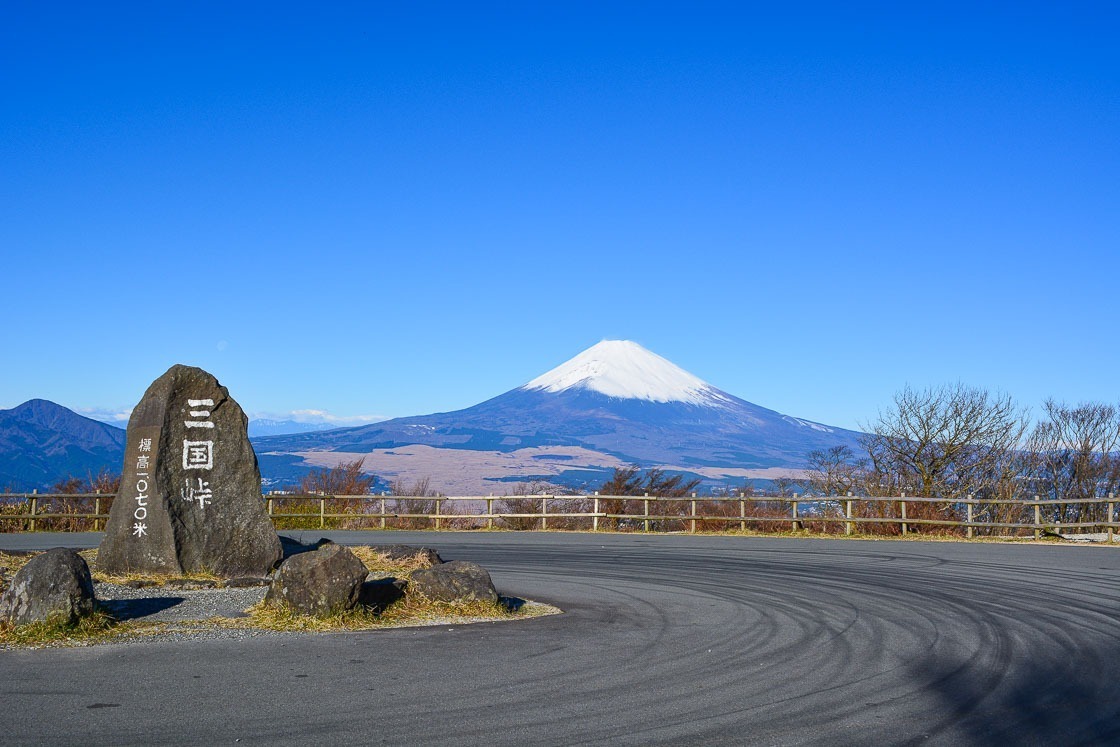
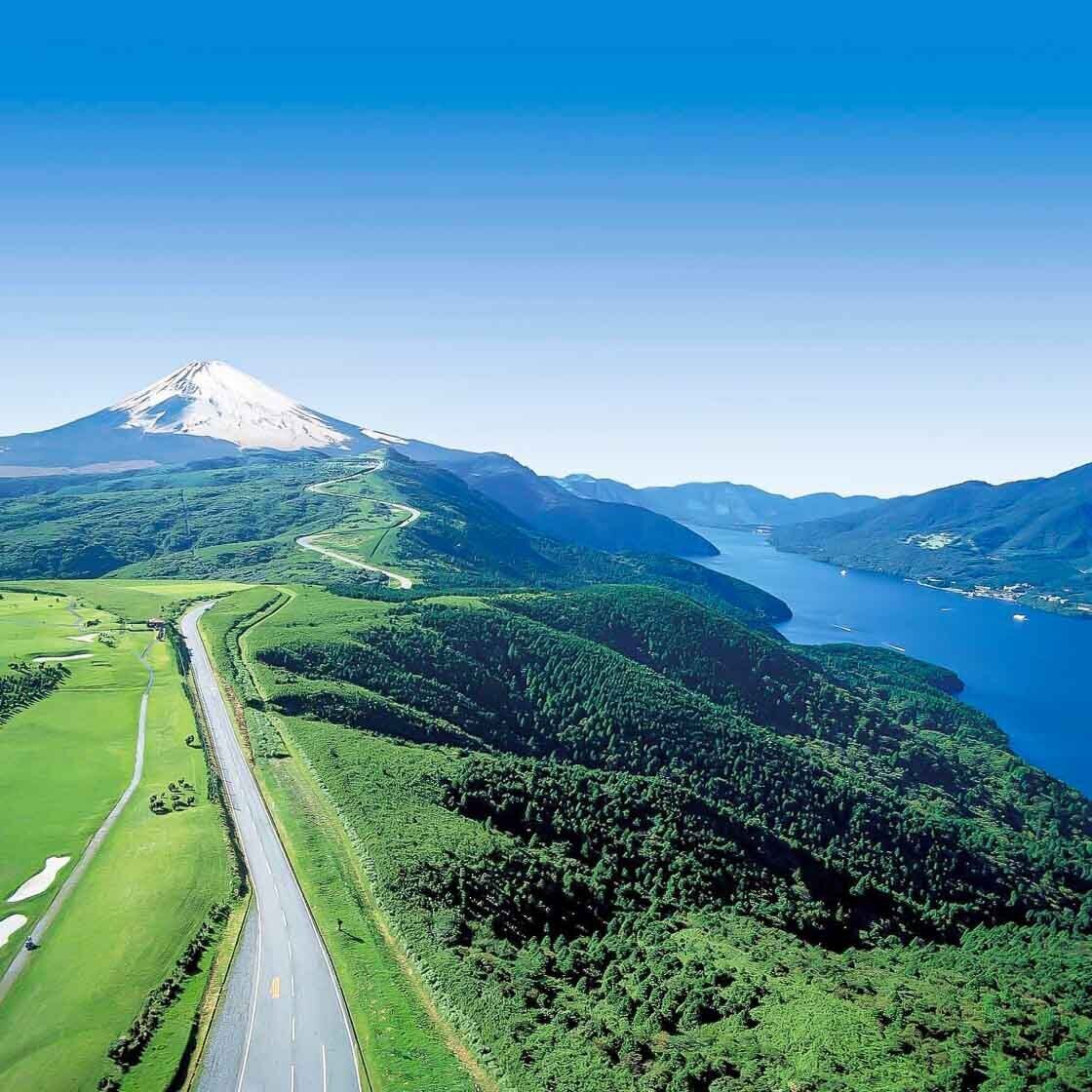
Links
- Kiunkaku - Official Japanese website on the Atami City website
- Omuroyama - Official English website
- Hamanoyu - Official English website of a hot spring accommodation in Inatori Onsen
- Cape Tsumekizaki - Official Japanese webpage on the Shimoda City website
- Cape Irozaki - Japanese website about the cape by the Irozaki Ocean Park visitor center
- Kawazu Seven Waterfalls - Official English website of the Kawazu Tourist Association
- Nirayama Reverberatory Furnace - Official Japanese website on the Izunokuni City website
- Obuchi Sasaba - Official Japanese webpage on the Fuji City website
- Higashiguchi Fuji Sengen Shrine - Official Japanese website
- Ashinoko Skyline - Official English webpage on the Japanese website
